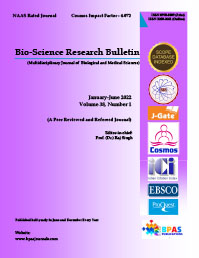Postulations from an Experiment on Microbial and Fungal Diversity
DOI:
https://doi.org/10.48165/Keywords:
microbial, fungal, TB, HIV, E. coli, Candida albicans, penicillin, hand, mouth, swabs, coloniesAbstract
The hand and mouth have regions that are prone to bacterium and fungus contact. Although there are many harmful microbial and fungal species, one being Candida albicans, a type of yeast, there are also others that essential to the human body. E. coli is an example of a bacterium species needed for digestive wellbeing. An experiment was conducted in the laboratory to make postulations on microbial and fungal diversity using class data. The experiment conducted is subjected to experimental errors.
References
Singh, R. personal writing, representing the Republic of South Africa, my country, 2019. 2. UKZN Practical Manual, BIOL 103: Introductory Biology for Health Sciences, UKZN, Life Sciences, 2019.
Singh R. Minimum inhibitory concentration: Interpretation and cross-Sectional analysis in an unstandardized 7H9 Mycobacterium tuberculosis broth-based system – A hypothetical case. J Pure Appl Microbiol 7(1): 777-784, 2013.
Najafpour G.D. Production of antibiotics. Biochemical Engineering and Biotechnoloogy, 2007. Accessed: https://www.sciencedirect.com/topics/immunology-and-microbiology/penicillium chrysogenum. Accessed on 23/05/2019.
Mayer F.L., Wilson D., Hube B. 2013. Candida albicans pathogenicity mechanisms. Virulence 4(2): 119-128.
